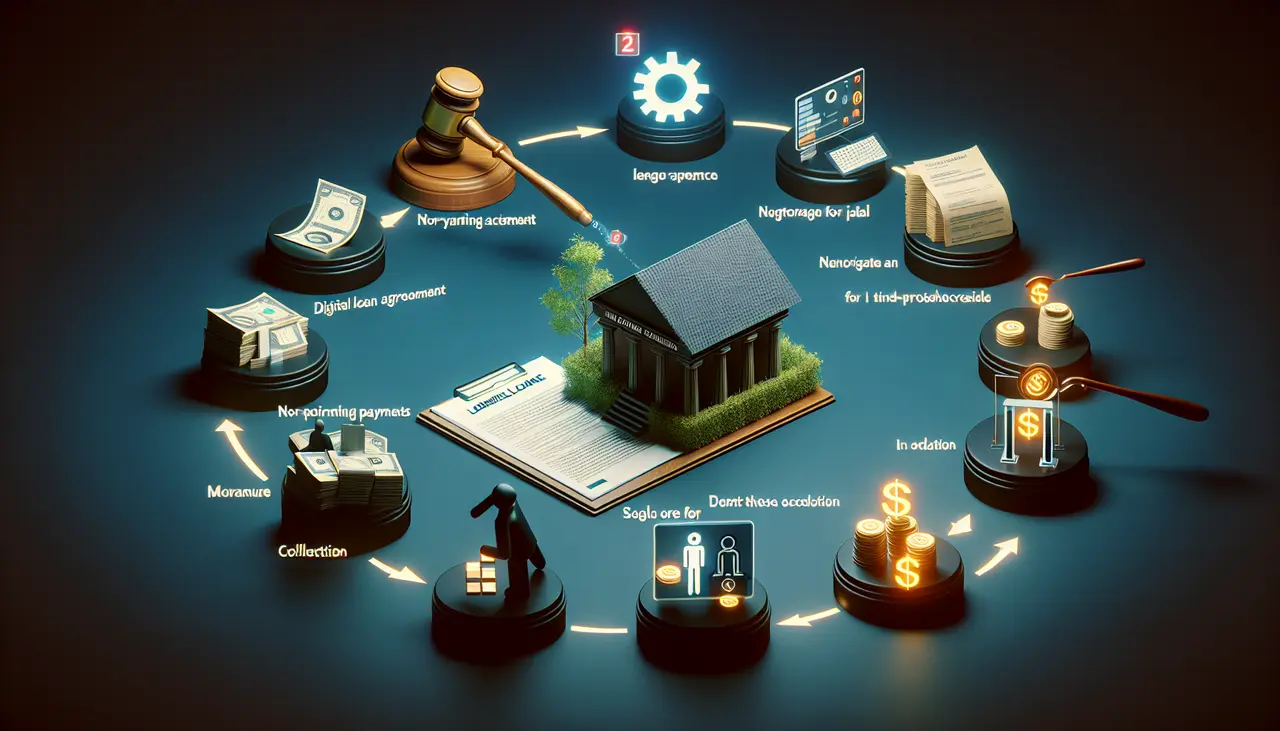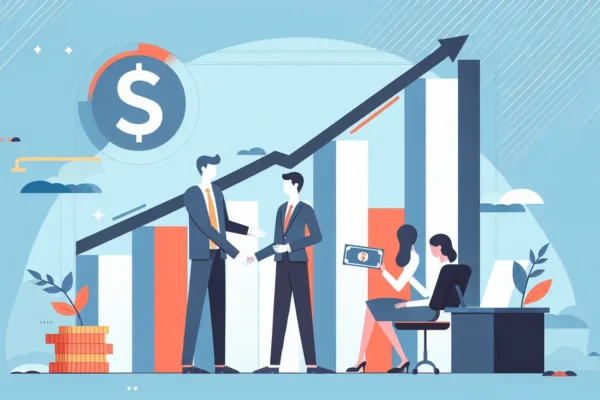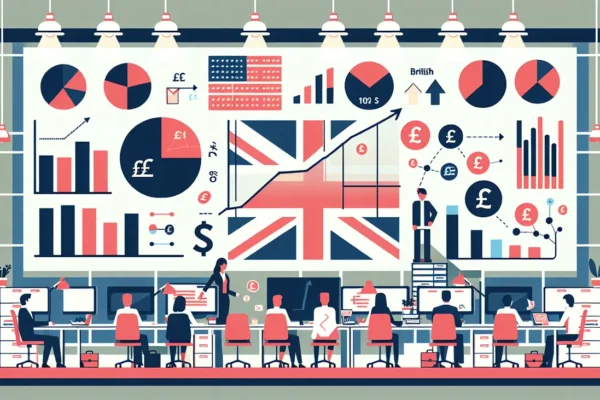Introduction to Fintech Lending and its Impact
Fintech lending, a blend of finance and technology, is changing the way we borrow money. Gone are the days of waiting in long lines at the bank. Now, with a few clicks on our smartphones or computers, we can apply for loans online.
This convenience comes from fintech companies using algorithms and data analytics to assess loan applications quickly. But it’s not just about speed. Fintech lending often offers more accessibility to those who might struggle to secure loans from traditional banks due to lack of credit history or insufficient collateral. However, this innovation doesn’t come without risks.
As the number of loans increases, so does the chance of borrowers not paying back. This can lead to what’s known as non-performing loans, a situation where loans are past due and recovery becomes uncertain.
The impact? It can affect the fintech company’s profit and, in worse cases, its ability to operate. But it’s not all doom and gloom. With every challenge comes a solution, and in the case of non-performing loans, options such as debt recovery and legal escalation are available to mitigate risks.
Understanding Part/Non-Performing Loans
In the world of finance and lending, not every loan handed out gets paid back on time. This leads us to two terms you might hear floating around: part-performing and non-performing loans. Let’s break them down into bite-sized pieces.
A part-performing loan is when payments are being made, but they’re not on schedule. It’s like when a friend promises to pay you back in full by a certain date but ends up only giving you bits and pieces instead.
On the other hand, a non-performing loan is when you’ve seen no payments for a while – typically 90 days or more. This is more like a friend who borrowed money and then, poof, went silent on you.
Knowing the difference helps businesses understand how much money they’re actually making, and what steps they might need to take to collect what’s owed. It’s about having a clear picture of financial health and making smart decisions moving forward.
The Significance of Loan Performance in Fintech
Understanding loan performance is crucial in the fintech world. It’s simple. Loans that are paid on time are tagged as performing loans. These are the good customers. They keep things running smoothly and ensure the fintech firms hit targets and, ultimately, make a profit.
Then, there are the non-performing loans (NPLs). These are the troublemakers. When a borrower stops paying for a while, usually 90 days or more, their loan is considered non-performing. This shift is bad news for fintech companies because it means they’re not getting the money back on time, which can severely impact their cash flow and overall financial health.
To keep the boat afloat, fintech firms closely monitor loan performance. They use smart tech to predict which loans might turn bad and take action early on. This can involve reaching out to borrowers to figure out payment plans or even offering financial advice to help them get back on track. The goal is to turn the bad loans good again, keeping the company’s books in the green and ensuring they can keep lending out money. In this digital age, understanding and managing loan performance is more important than ever for fintech success.
Strategies for Managing Non-Performing Loans
When it comes to managing non-performing loans (NPLs), time is of the essence. The longer a loan remains unpaid, the harder it becomes to recover the owed amount. Here’s a straightforward strategy to deal with NPLs effectively:
Firstly, identify these loans early. The sooner you spot a loan turning bad, the better. This means keeping a close eye on payments and reaching out the moment things seem off-track.
Secondly, communication is key. Reach out to the borrower directly and try to understand the root of the problem. It’s often more productive to negotiate a revised payment plan that aligns with their current financial situation rather than pushing for the original terms which they clearly can’t meet.
Thirdly, consider restructuring the loan. This could involve extending the loan term, reducing the interest rate, or temporarily pausing payments. It’s about finding a win-win situation where the borrower can feasibly repay the loan, and you recover the maximum possible amount.
If these steps don’t work, then escalation may be necessary. This means involving specialist recovery teams, lawyers and possibly pursuing asset seizure or court action. However, treat this as a last resort. Legal processes can be costly, time-consuming, and can damage your reputation if not handled with care.
Remember, the goal is to recover what’s owed in the most efficient and empathetic way possible. Sometimes, a little flexibility can go a long way in turning a non-performing loan into a performing one.
Debt Recovery in the Fintech Sector
In fintech lending, not all loans perform like stars. When borrowers fail to meet their repayment obligations, these loans turn bad, becoming what we know as non-performing loans.
It’s critical for fintech companies to have effective debt recovery techniques to minimise their losses.
First off, communication is key. Start by sending reminders and notices to borrowers. Simple, right? But it gets the message across.
Then, negotiate. Maybe the borrower’s facing tough times. Offering a flexible repayment plan could turn things around.
Next, leverage technology. Use data analytics to predict which loans might go bad and act preemptively. And if things don’t improve, legal action might be the last resort. It’s tough but sometimes necessary to recover the funds.
Remember, preserving a positive relationship with the borrower, even in tough situations, can pay off in the long run. Being firm but fair is the name of the game in fintech debt recovery.
The Role of Technology in Enhancing Debt Recovery
Technology plays a crucial role in the world of debt recovery, making the process faster and more efficient than ever before. Today, fintech companies are using innovative tools to keep tabs on part/non-performing loans and streamline their recovery processes.
First off, automated systems can send reminders to borrowers, nudging them to keep up with their payments without needing a human to constantly monitor these accounts. This not only saves time but ensures consistent communication.
Secondly, data analytics comes into play by analysing the borrower’s payment history and behavior. This insight allows lenders to predict future payment likelihoods and tailor their recovery strategies to be more effective.
Lastly, platforms powered by artificial intelligence can even negotiate payment plans with borrowers or even identify the optimal time to initiate escalation if necessary.
By integrating tech at every step, fintech companies are not only recovering debts more effectively but are doing so in a way that is less invasive and more respectful to the borrower. This harmony between efficiency and empathy might just be the golden key to transforming how debts are recovered in the digital age.
Legal Actions and Escalations for Unrecoverable Loans
When a fintech lends money and doesn’t get it back, after using a recovery specialist, legal actions are often the next step. This is not anyone’s favourite part, but sometimes it’s necessary to recover losses from loans that just aren’t paying out.
What you need to know is that legal escalations can be pricey and time-consuming. They aren’t a first choice but a last resort. Before going down this road, lenders often weigh the cost of legal actions against the amount they can realistically recover. A specialist recovery team can help triage, acting as a filter before this step.
In litigation, if the court sides with the lender, there are a few outcomes. The borrower might be ordered to pay the debt through a structured plan, assets might be seized, or in extreme cases, winding up or bankruptcy proceedings might be initiated.
It’s a tough process, sure, but it serves as a reminder of the seriousness of borrowing and lending money, regardless of the source.
The Importance of Compliance and Regulatory Frameworks
In the world of fintech lending, navigating through compliance and regulatory frameworks is not just important—it’s essential. Why? Because these rules ensure that lending practices are fair, transparent, and above board.
Think of these frameworks as the rulebook that keeps the game fair for everyone—lenders, borrowers, and the wider financial system. Without strict adherence to these regulations, lenders could face hefty penalties, legal battles, or even the risk of being shut down.
The compliance landscape includes understanding and implementing laws related to consumer protection, anti-money laundering (AML), and know-your-customer (KYC) procedures. This is where fintechs need to be sharp. They have to ensure that their operations do not just aim for profitability but also strictly follow these legal requirements. It’s a balancing act—innovating to meet customer needs while also ensuring every transaction stays within the legal boundaries.
Failing to comply can lead not just to financial losses but also to a damaged reputation, which in the world of fintech, is as crucial as capital. Regulatory bodies are not just watchdogs; they are partners in maintaining the integrity of the financial system. Working closely with them helps in understanding the nitty-gritty of legal requirements and in designing products that are both innovative and compliant.
In sum, for fintech firms, especially those dealing with lending and managing part/non-performing loans, compliance and regulatory frameworks are non-negotiable. They are the foundation on which trust, reliability, and long-term success are built. So, if you’re in this space, make sure you have the compliance checklist at the forefront of your operations. It’s not just about adhering to laws; it’s about setting the standard for responsible and sustainable lending practices.
Case Studies: Successful Debt Recovery in Fintech
Fintech companies often face the challenge of non-performing loans, where borrowers fail to make payments. However, some have turned this challenge around through effective debt recovery strategies.
For instance, one fintech applied a personalised approach, reaching out to borrowers with reminders via email and SMS before the due date. When payments were missed, they offered flexible repayment plans tailored to the borrower’s current financial situation. This strategy not only improved loan recovery rates but also maintained positive customer relationships.
Another company focused more heavily on data analytics to predict which loans were likely to default, allowing them to intervene early. They used automated communication tools for early reminders and employed a dedicated team for cases needing a more hands-on approach.
In both cases legal escalation was always kept as a last resort, ensuring it was only used when absolutely necessary. Ahead of this they worked with a specialist fintech recovery team to arbitrage and filter out those that were suitable for escalation, vs those that should be written off.
These examples show both the impact of a fintech specialist recovery team, and that combining technology with a human touch can significantly enhance debt recovery efforts.
Conclusion: Navigating Non-Performing Loans in Fintech Lending
Navigating non-performing loans (NPLs) in fintech lending demands a clear strategy and an unwavering focus on both prevention and recovery. Remember, prevention is always better than cure. So, the first step is to have robust risk assessment tools and algorithms that can predict loan defaults before they happen. This tech-forward approach helps in minimising the chances of a loan turning bad.
Now, when a loan does go south, don’t panic. Communication is key. Reach out to the borrower. Understand their situation. Sometimes, restructuring the loan terms can prevent a total loss, benefiting both parties.
If all attempts at negotiation fail, escalation via a specialist recovery team or legal action might be the last resort. It’s crucial but tread carefully. The goal is recovery, not revenge. Employing a recovery specialist can often encourage borrowers to settle their dues to avoid legal action.
In all of this, keep learning and adapting. The fintech landscape is ever-evolving, and so are the strategies for handling NPLs. Stay informed and stay ahead.
Remember, handling non-performing loans is as much about maintaining a good borrower relationship as it is about recovery. Do it right, and your venture can navigate through stormy waters with resilience and tact.







